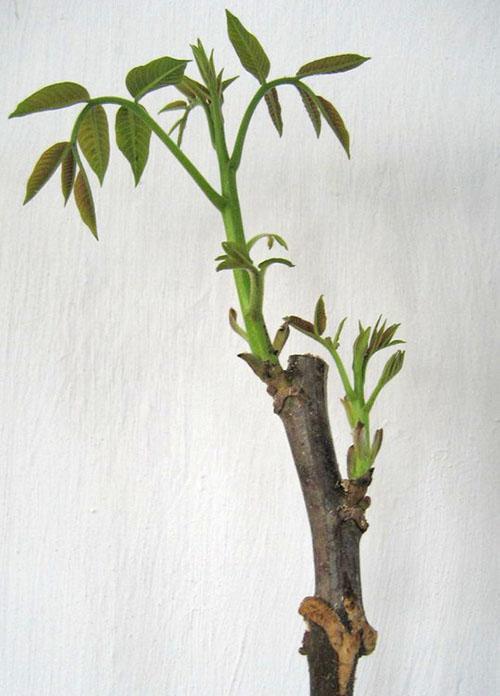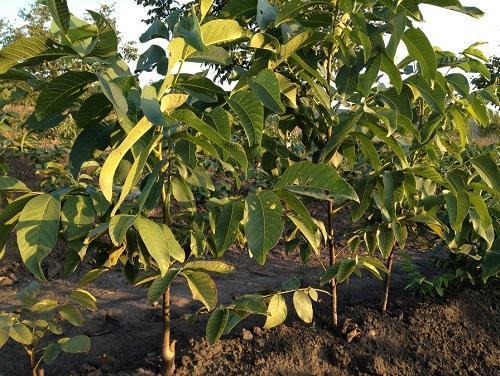Walnut grafting: what can be done
 A peculiarity of the walnut is its very slow growth. Unlike fruit trees, which begin to bear fruit on average from the third year of life, a nut does not form fruit before it reaches 8 years of age. However, experienced gardeners have known for a long time that it is possible to speed up fruiting in half if the nut is grafted. In this case, the first crop will appear in a maximum of 5 years. In addition, grafting allows you to preserve the varietal qualities of the nut, because trees grown by the seed method are often pollinated, and instead of large fruits with thin shells, small hard nuts can be obtained. The main thing in this matter is to know what you can graft a walnut on, as well as choose the right scion and carry out the procedure.
A peculiarity of the walnut is its very slow growth. Unlike fruit trees, which begin to bear fruit on average from the third year of life, a nut does not form fruit before it reaches 8 years of age. However, experienced gardeners have known for a long time that it is possible to speed up fruiting in half if the nut is grafted. In this case, the first crop will appear in a maximum of 5 years. In addition, grafting allows you to preserve the varietal qualities of the nut, because trees grown by the seed method are often pollinated, and instead of large fruits with thin shells, small hard nuts can be obtained. The main thing in this matter is to know what you can graft a walnut on, as well as choose the right scion and carry out the procedure.
Selection and preparation of stock

It is recommended to use varietal nut seedlingsgrown from seeds not older than 3 years. Ideally, it will be two-year-old trees with a stem diameter of 1-1.5 cm.
The rootstock variety must be biologically compatible with the scion, possess good frost-resistant properties, have a high resistance to diseases and restrained growth.
The choice of rootstock must be done based on the climatic conditions of the region where the tree will be grown. Most often Walnut grafted onto seedlings:
- nuts of cultivated varieties (Five-year-old, Urozhainy, Zarya Vostoka) - they are the most compatible, tolerate frosts well and give a large harvest, and the scion takes root well;
- rock walnut - it is better to choose varieties with medium or strong growth, however, it should be borne in mind that not any soil is suitable for them and trees can suffer during a particularly frosty winter;
- Hinji nuts - characterized by high yields from the third year of life and resistance to diseases, but they do not tolerate cold winters.
How to choose a scion?
For the scion, it is necessary to select young branches of nuts that have formed in the current year. The main selection criterion should be the quality of the crop.
Do not use fatty, very elongated shoots as a scion, as well as branches on which buds are formed on bark bulges.
The branch should be cut off, leaving an even stalk 20 cm long with developed buds, the thickness of which should be at least 0.8 cm. It is not recommended to use the buds at the base and from the top of the shoot.